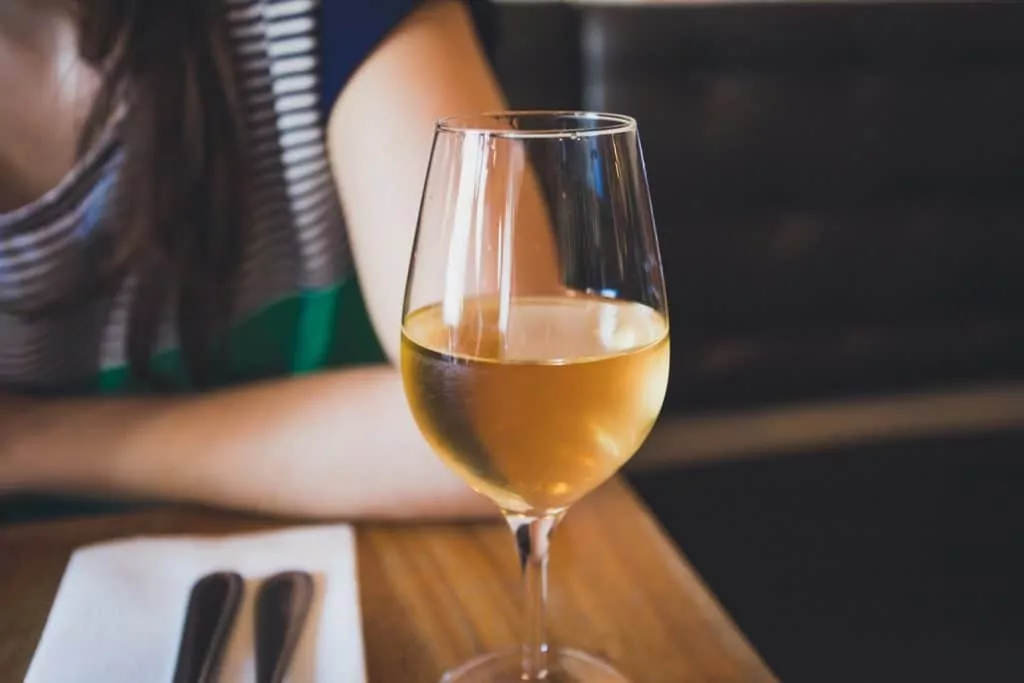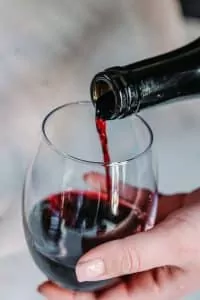Does the shape of the wine glass really matter?
Wine is wine, right? What difference does it make if it’s in the “right” wine glass?
When I first heard there are unique glasses for many of the common wines, my thoughts were “This is just marketing nonsense. Who would fall for it?”. And so started my journey to find answers.
My adolescent wine glass experience
I thought about my experiences with wine over the last 5 decades, and how those experiences perhaps shaped my understanding of wine appreciation from the point of view of the vessel.
My first recollection was as a ‘tween watching James Bond. Besides his “Vodka martini, shaken not stirred”, he enjoyed his champagne in a coupe. Remember those super wide-mouth glasses and the stories behind their shape? Well, although a cool look, they were totally wrong for sparkling wines.
Off to the kitchen, I went with my older cousins (they were a proxy for “adult supervision”), to test the Asti Spumante. After we tried some in various glasses, including the ever-present “jelly glass”, even our adolescent palettes noticed the bubbles hit our noses differently.
We discovered that the narrower the glass, the more force behind the bubbles. However, it took another decade and a few chemistry courses for me to understand why. My young adult wine glass experience
My young adult wine glass experience
A few years later I attended a fairly formal dinner at my girlfriend’s house. Her mother had two different size wine glasses at each place setting, which I assumed was for people to choose to have a big glass of wine or a small one. Stupid, I know, and as soon as the hostess asked, “red or white?”, I was glad I kept my thoughts to myself. The good news is my girlfriend’s mother poured a bit of both wine for me and suggested I try each with the various components of the meal. I did, but as I had not yet developed a mature palette, I found the wine only served to help wash down the delicious dinner.
Spiegelau Style, Set of 4 European-Made No-Lead Crystal, Classic Stemmed, Dishwasher Safe, Professional Quality White Wine Glass Gift Set
My older adult wine glass experience
Add a couple more decades and hundreds more glasses of wine, and I finally reached a point where my nose, palette and brain were discerning enough to notice some of the nuances among the different wines. Oh, and I graduated from red, white and rosé to then understand the concept of varietals. This led me to a desire for more answers. For example, why does a pinot noir taste so different from a cabernet sauvignon? I mean up until now, a red is a red is a red, right ?
My “testing” continued, but I still didn’t make the connection with the glassware until I bought some books on wine. Often included at the end of these books was a chapter on wine accessories. The information included bottle openers, decanters, and you guessed it, glassware. Now I was ready to look more seriously at the mysterious connection between wine and glassware.
My wine-tasting experiment with different glasses
I invited some friends over to do a wine tasting and asked them to bring their own wine glasses as I owned only one set. Though not very scientific, we had quite a variety of shapes, sizes, lip configurations, etc. to get some rudimentary “data” about this glass phenomenon. To our surprise, many of us “thought” we tasted a difference. I believe the wine and/or peer pressure influenced some of our conclusions, however, I do remember I realized that night there really was a difference. I just couldn’t explain what that was.
The professional wine test
Then, just a few years ago, my wife and I went to a Riedel glassware demonstration. Finally, I had the opportunity to see how their marketing stacked up to my experiences. Although the presenter gave a very interesting overview of wine glassware, I was anxious to get to the testing. It felt like the “hype” was orchestrated to encourage us to think we experienced what they wanted us to experience. Finally, the wine was poured.
The hostess poured four samples for us to try:
1) A good wine in a cheap, standard wine glass
2) The same good wine in the “correct” wine glass
3) A mediocre wine in the cheap, standard wine glass
4) The same mediocre wine in the “correct” glass
The results? I have to say, hype or not, I noticed a big difference in how the wines tasted in the different glasses. The good wine was fabulous in its correct varietal glass but became a bit one-dimensional in the cheap glass. Even more surprisingly, the mediocre wine tasted so much better in the varietal correct glass!
Being the skeptic that I am, I still wasn’t convinced. So I did an on-the-spot modification to the test. I did it blindly. The results were the same. The wine in its correct varietal glass just tasted better. How could that be?
Yes, the wine glass design matters
After more research, I learned glass design undoubtedly is important. The various elements of a particular wine must be properly delivered to your nose and palette. A large bowl allows for the aromatic notes to evaporate, and then the tapered sides of the glass direct these rich notes to your nose. In this way, a full-bodied Bordeaux delivers its more subtle aromas to you. Another factor is the thinness of the rim. There seems to be a disconnect between your mouth and a thick glass; with super-thin glasses, the delivery of the wine to your mouth is seamless. Thin glass also helps channel the flavors to the right areas of your tongue and create the experience intended by the winemaker.
Consider these four factors that influence the taste when you serve wine:
- crystal vs regular glass
- hand was blown vs machine-made glass
- lip configuration (thin vs thick)
- bowl height
More about red vs white wine glasses
The most obvious distinction between red and white wine glasses is the shape of the bowl. A wider bowl provides a larger surface area and provides greater access to the wine’s aroma. As red wine tends to be more flavorful and robust than white, a wider bowl enables you to better enjoy all it has to offer. In contrast, most white wines, which are best served chilled, do not require a wide bowl. A slimmer frame helps direct the delicate flavor of white wine more directly to your mouth and nose and prevents overexposing the wine to too much oxygen. Champagne flutes have a different shape altogether; they are tall and narrow, which limits exposure to oxygen and allows the carbonation (bubbles) to last longer.

What about the stem?
Wine glasses come both with and without stems. Which you like more comes down mostly to personal preference. However, science shows that a stem helps keep wine at its proper temperature. When your hand touches the bowl while you drink from a stemless glass, it changes the temperature of the wine. For this reason, as a general rule, you should serve white wine in a glass with a stem. However, stemless wine glasses are simply easier sometimes. So… if you are happy with the taste when you drink white wine from a glass without a stem, by all means, continue.
Are the “correct” wine glasses worth the price?
Nothing about wine is ever simple. For example, I said above that most white wines need not be served in a glass with a wide bowl. But that’s a broad generalization; robust white wines like Chardonnay actually taste better when served in a wider bowl.
That being said, is it worth it to use the best glass for each wine? The short answer is maybe not. Varietal-specific glasses are expensive; I recommend you weigh your level of palette sophistication with the price point of the wines you enjoy within your budget. Do you notice the nuances enough with the wines you drink to warrant a set of $50 a stem glassware? If the answer is yes, and you can afford the glasses, go for it. Otherwise, you can purchase inexpensive glasses that have many of the components you want*. Perhaps spring for two sets of wine goblets; one for red and one for white.
My final recommendation: If you have a chance to participate in a glassware comparison, do so! You will find the size and shape of the glass can absolutely affect the taste and experience. Once you experience a wine tasting using different glasses, your perception about whether the glass really matters will change forever and give you a new level of sophistication that rivals James Bond.
At that point, you can make an educated decision about whether or not the wine glass shape is important to you.
- 50Plus-Today recommends Spiegelau Universal Wine Glasses if you want to purchase just one set that works for both red and white wines.

Recommended article:
- 8 Perfect Gifts for 50Plus Wine Lovers
- 8 Fascinating & Obscure Facts About Wine
- Does Organic Wine Taste Better?
ABOUT THE AUTHOR
 Greg Indelicato holds several certifications in the wine and spirits discipline, notably WSET 1 and 2; World MasterClass of Whiskey and Certified Bourbon Steward. Over the past several years, Greg served as a guest speaker on wines and spirits for Speaking of Grapes and Grains, as well as for various industry and private clients. He enjoys helping others better understand wine and spirits, and looks for opportunities to share his knowledge and passion with others. A recently retired geologist, Greg’s extensive science background provides a unique perspective for both the novice and the more seasoned wine and spirits drinkers.
Greg Indelicato holds several certifications in the wine and spirits discipline, notably WSET 1 and 2; World MasterClass of Whiskey and Certified Bourbon Steward. Over the past several years, Greg served as a guest speaker on wines and spirits for Speaking of Grapes and Grains, as well as for various industry and private clients. He enjoys helping others better understand wine and spirits, and looks for opportunities to share his knowledge and passion with others. A recently retired geologist, Greg’s extensive science background provides a unique perspective for both the novice and the more seasoned wine and spirits drinkers.
Contact Greg with your wine questions or for additional information about tastings.










